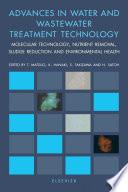Basic Mathematics for Water and Wastewater Operators
To properly operate a waterworks or wastewater treatment plant and to pass the examination for a waterworks/wastewater operator’s license, it is necessary to know how to perform certain calculations. All operators, at all levels of licensure, need a basic understanding of arithmetic and problem-solving techniques to solve the problems they typically encounter in the workplace. Hailed on its first publication as a masterly account written in an engaging, highly readable, user-friendly style, the Mathematics Manual for Water and Wastewater Treatment Plant Operators, Second Edition has been expanded and divided into three specialized texts that contain hundreds of worked examples presented in a step-by-step format. They are ideal for all levels of water treatment operators in training and practitioners studying for advanced licensure. In addition, they provide a handy desk reference and handheld guide for daily use in making operational math computations. This first volume, Basic Mathematics for Water and Wastewater Operators, introduces and reviews fundamental concepts critical to qualified operators. Presented at a basic level, this volume reviews fractions and decimals, rounding numbers, significant digits, raising numbers to powers, averages, proportions, conversion factors, flow and detention time, and the areas and volumes of different shapes. It also explains how to keep track of units of measurement (such as inches, feet, and gallons) during the calculations. After building a strong foundation based on theoretical math concepts, the text moves on to applied math—basic math concepts applied in solving practical problems for both water and wastewater operations. The material is presented using clear explanations in manageable portions to make learning quick and easy, and illustrative real-world problems are provided that correlate to modern practice and design.
This first volume, Basic Mathematics for Water and Wastewater Operators, introduces and reviews fundamental concepts critical to qualified operators.










